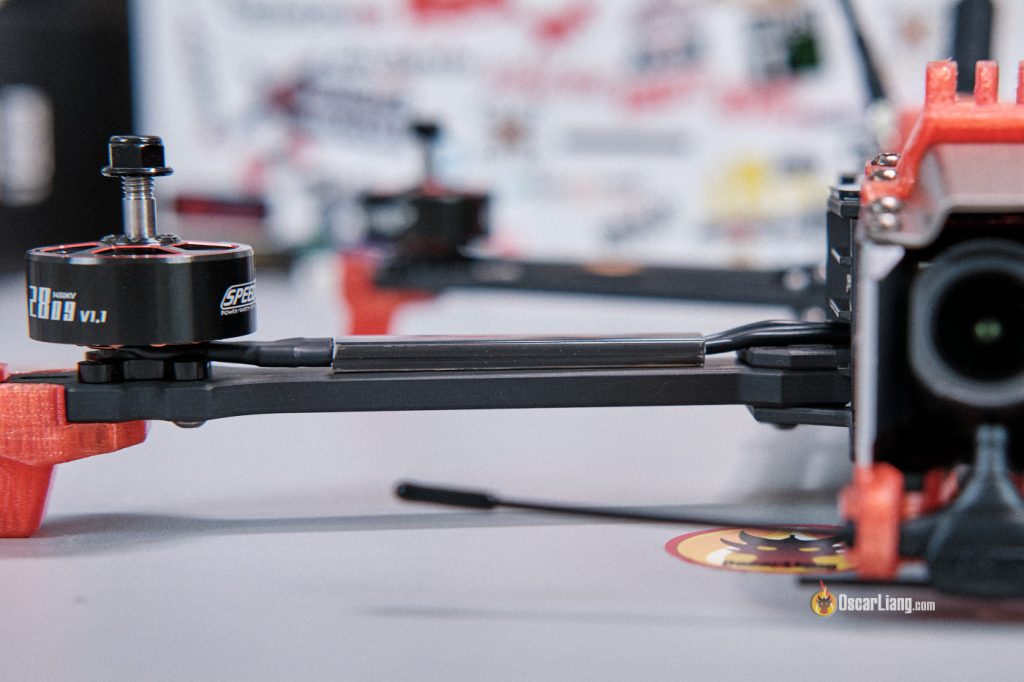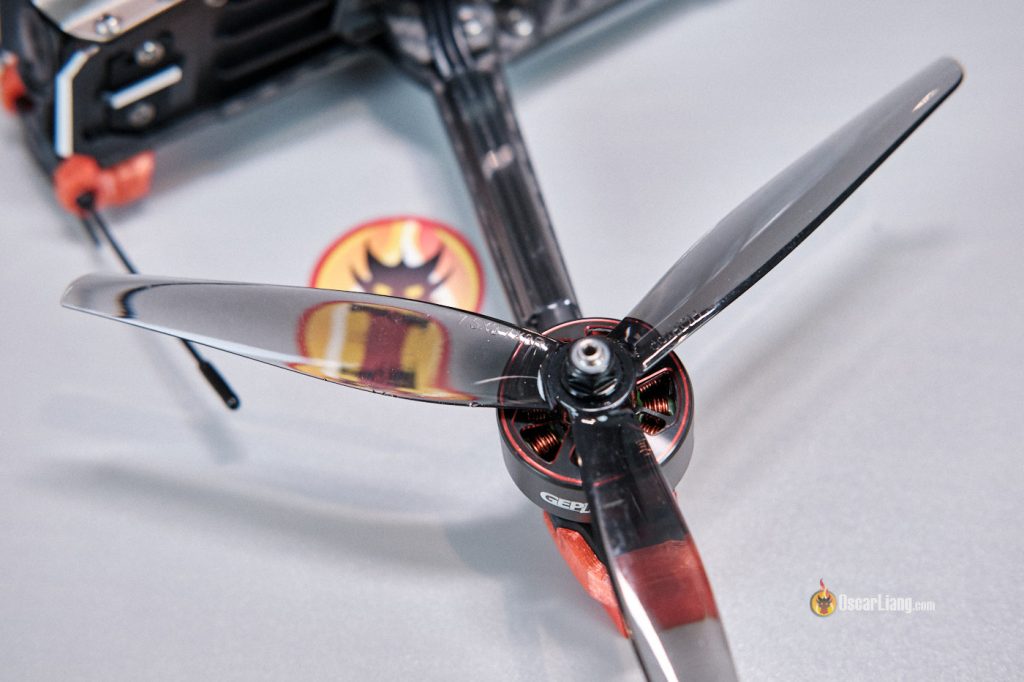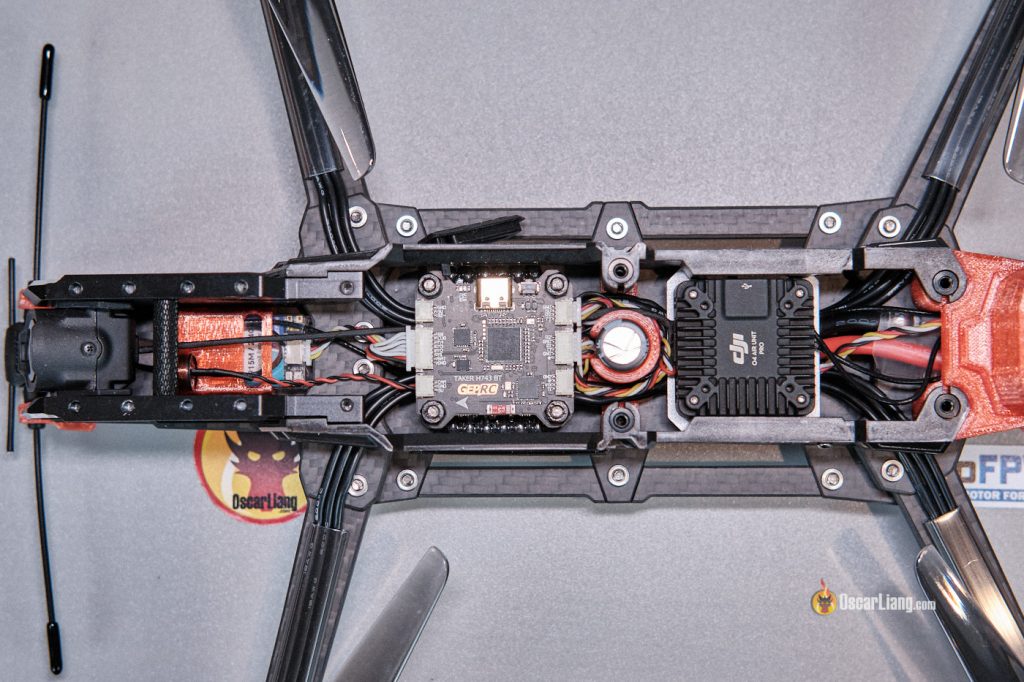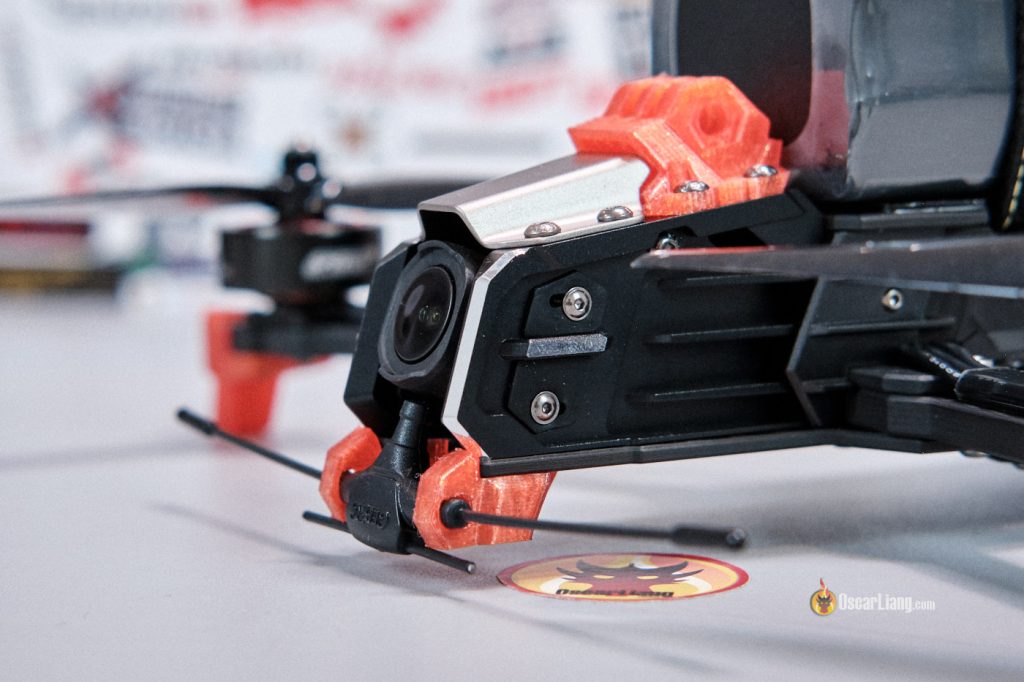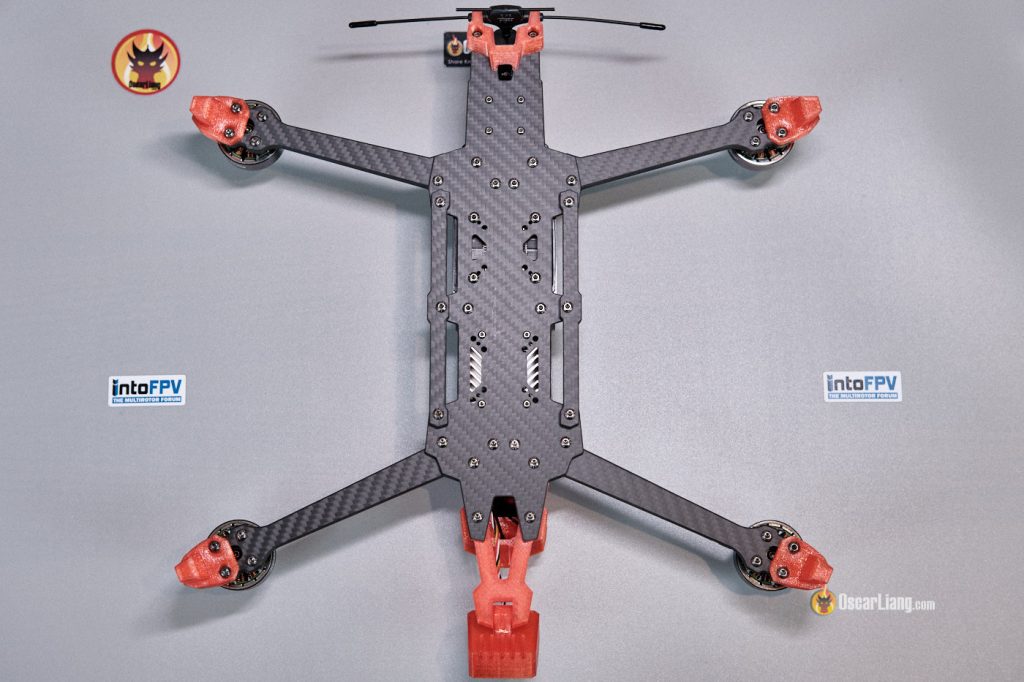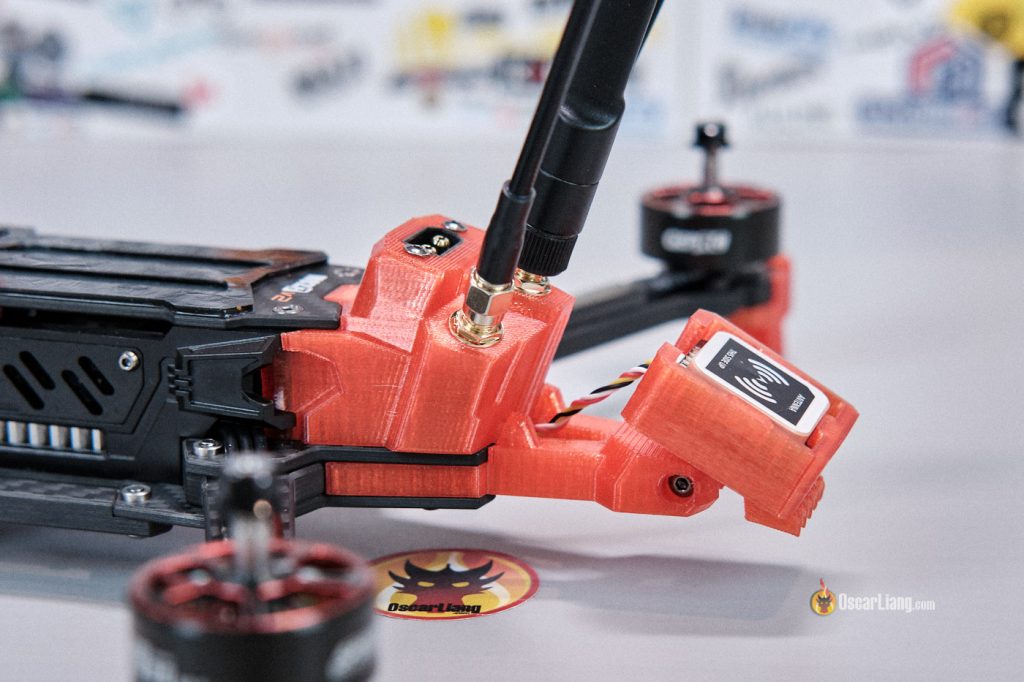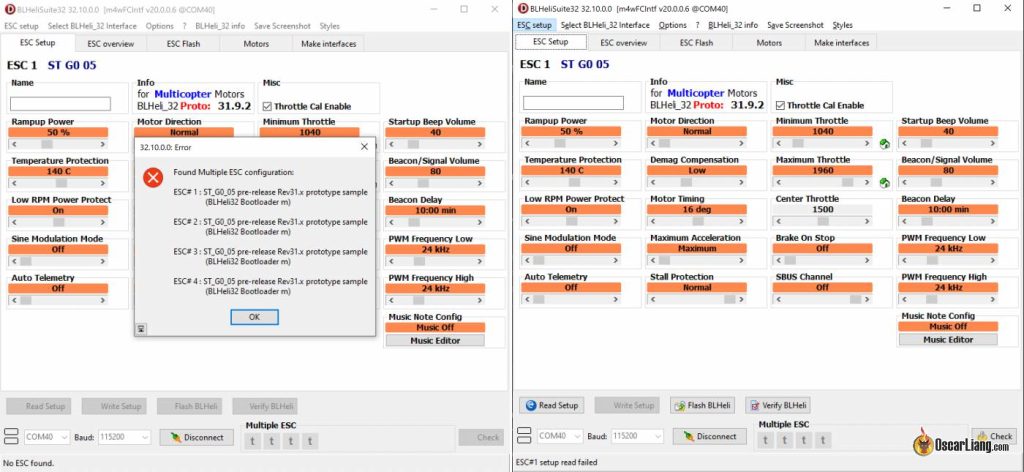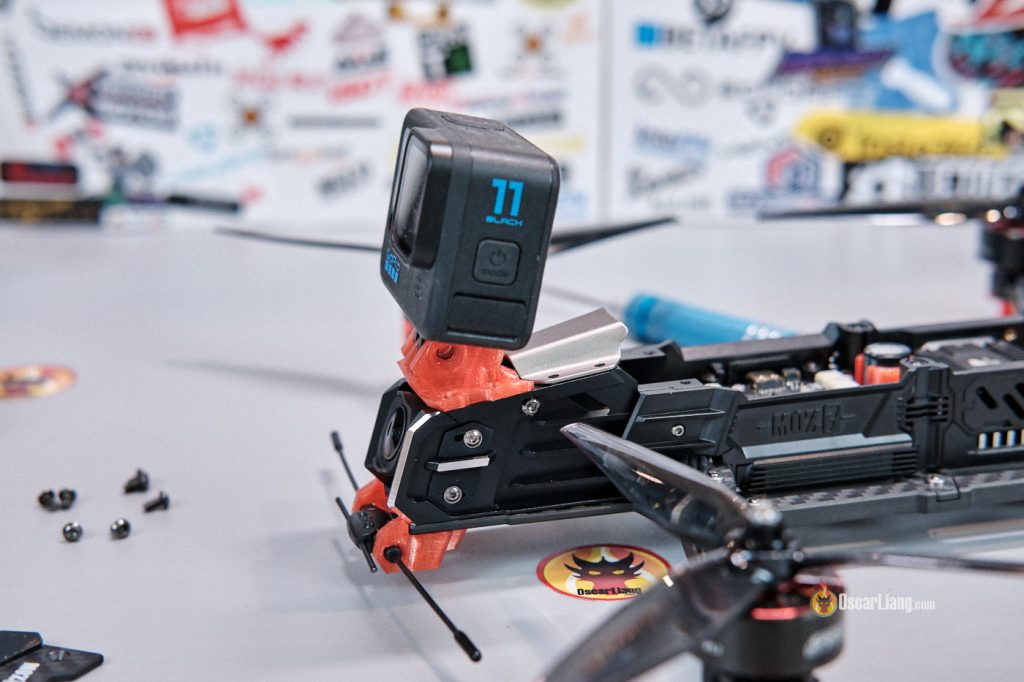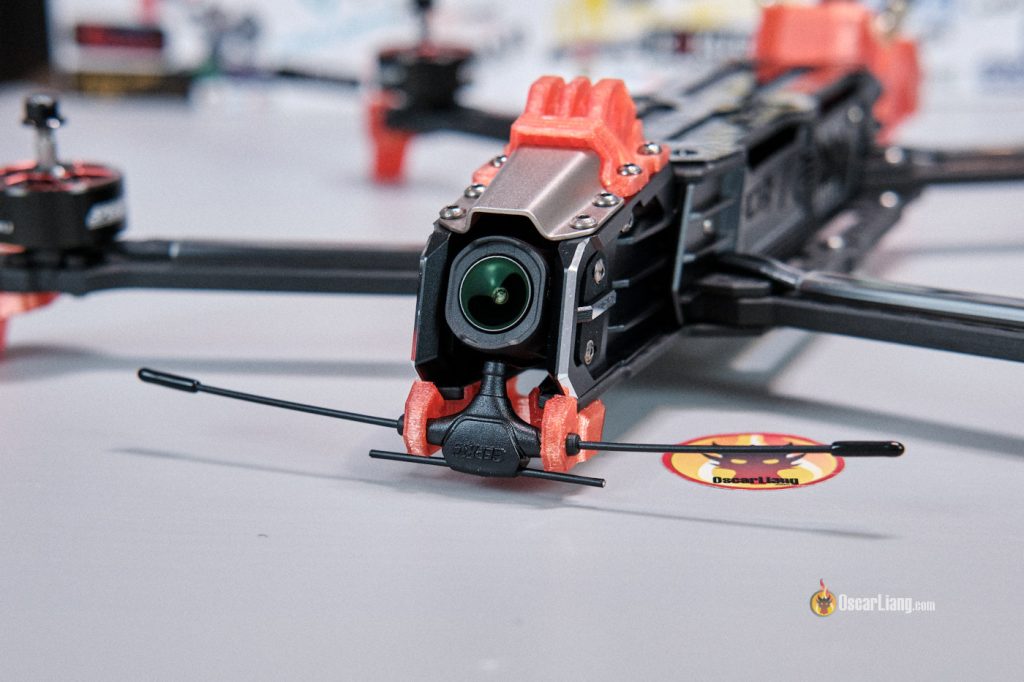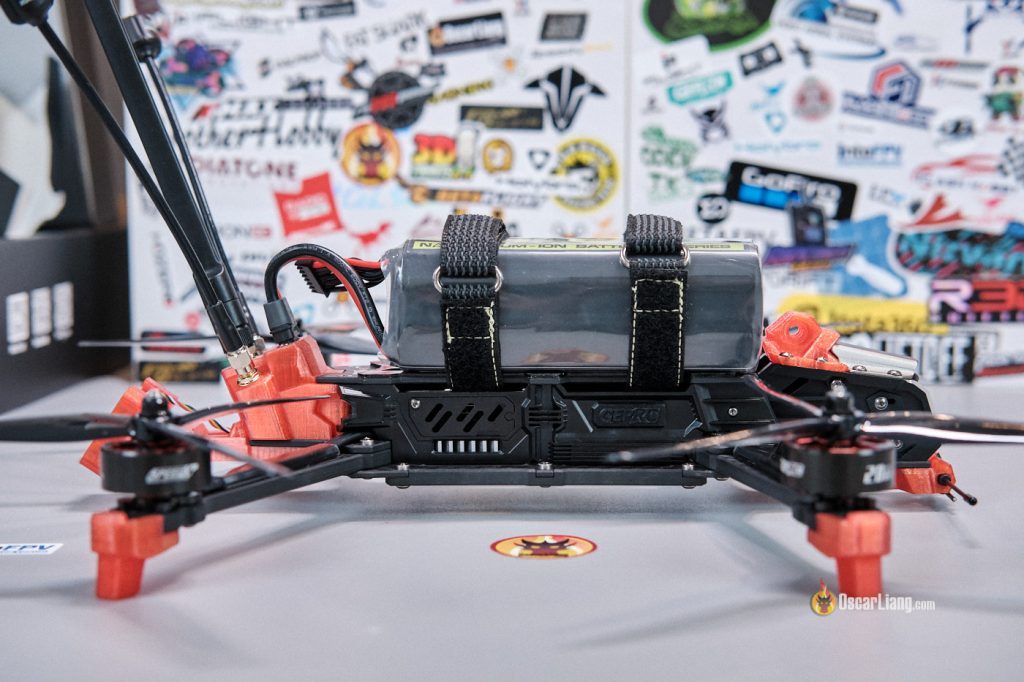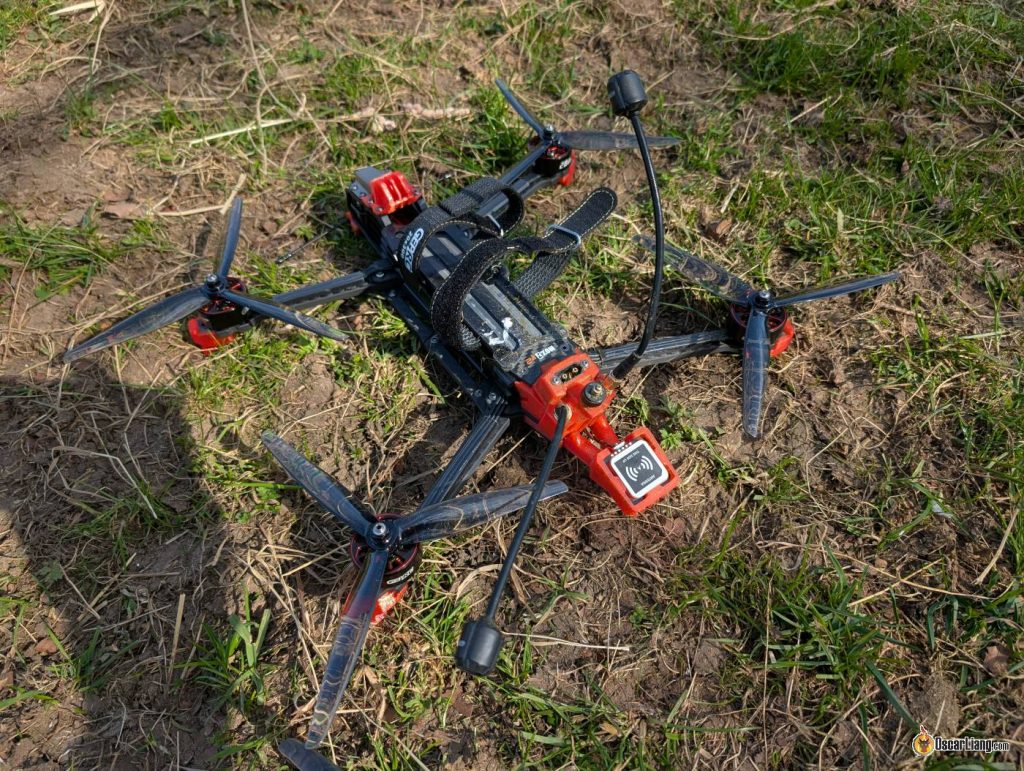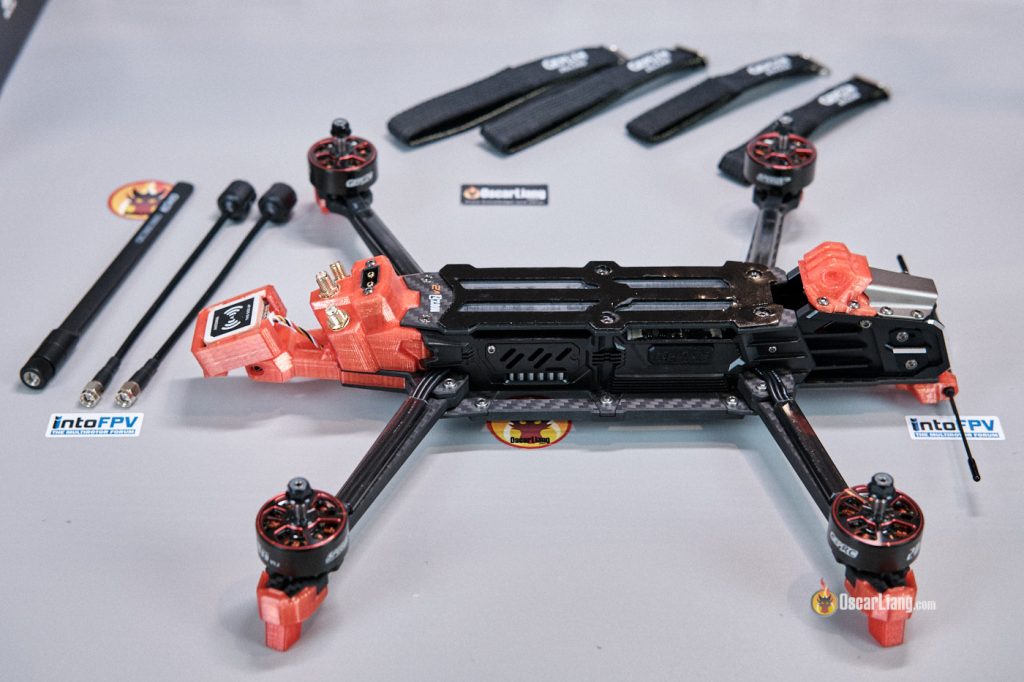Why consider a 7-inch FPV drone in a world increasingly shifting towards smaller, sub-250g models? Well, larger drones outperform smaller ones, carry heavier payloads, and offer longer flight times. They’re also faster, essential for situations requiring speed and endurance. The GEPRC MOZ7 V2, featuring 7.5-inch props and powerful 2809 motors, addresses this need perfectly, delivering speed, stability, and flight time for high-speed chases and long-range cinematic flights. In this review, we’ll explore its features, specs, and flight performance to see if this is the right drone for you.
Priced from $664.99, the MOZ7 V2 is not a cheap drone. If you have a tight budget, you can build your own 7-inch FPV drone for as cheap as $150, although it certainly won’t match the features and performance of the MOZ7. It’s worth checking out: https://oscarliang.com/150-dollar-7inch-fpv-drone/
Where to Buy
Get the MOZ7 V2 FPV Drone from AliExpress: https://s.click.aliexpress.com/e/_oB7c6Sv
Included Accessories:
- 1 x GEPRC MOZ7 V2 FPV Drone
- 2 x HQ 7.5×3.7×3 Props (2CW+2CCW)
- 4 x Battery straps (15x250mm and 15x300mm)
- 1 x L-shaped screwdriver (1.5mm)
- 1 x L-shaped screwdriver (2.0mm)
- 1 x L-shaped screwdriver (3.0mm)
- 1 x Spare screw pack
- 2 x Battery anti-slip pads
- 1 x Bind button pin for O4 Pro
- 2 x O4 antennas, 1 x Receiver dual-band antenna
Specifications
- Frame: GEP-MOZ7 V2
- Wheelbase: 336mm
- Top/Bottom Plate Thickness: 2.5mm
- Middle Plate Thickness: 3mm
- Arm Thickness: 6mm
- FC/ESC stack height: 30mm
- FC: TAKER H743 BT
- MCU: STM32H743
- Gyroscope: MPU6000 & ICM42688-P (Dual Gyro)
- Barometer: Yes
- OSD: BetaFlight OSD w/ AT7456E chip
- ESC: GEP 4-in-1 ESC BLHeli32 50A
- GPS: GEP-M1025
- VTX & Camera: DJI O4 Air Unit Pro
- Antenna: Momoda2 SMA (LHCP)
- Power Connector: XT60
- Motor: SPEEDX2 2809-1450KV V1.1
- Prop: HQ 7.5×3.7×3
- Weight: HD 750±10g (claimed)
- Receiver Options: PNP / ELRS 915M/2.4G GemX / TBS NanoRX
- Recommended Battery: LiPo 6S 3300mAh / Li-ion 6S 8000mAh
- Claimed Flight Time: Approx. 25 mins (varies with battery, flying style, and conditions)
Design and Build Quality
Technically, the MOZ7 V2 is a 7.5-inch drone, tuned specifically for 7.5-inch props. While it can use standard 7-inch props, using the recommended 7.5-inch props offers better performance and longer flight time.
GEPRC claims the frame has been reinforced over its predecessor, resulting in better crash resistance and more stable flight performance. However, this reinforcement also means increased weight. Although GEPRC’s specs list the drone at around 750g, I measured nearly 843g without a battery—almost 100g heavier than advertised. A lighter design would significantly improve efficiency.
Measured weights:
- Without battery: 843g
- With 6S 2200mAh LiPo: 1218g
- With 6S 4000mAh (21700 6S1P): 1265g
- With 6S 6000mAh (18650 6S2P): 1480g
The heavier weight partly results from its spacious frame design, which simplifies maintenance, repair, and modifications—a refreshing change from tightly packed competitions like the iFlight Chimera 7 Pro.
The aluminum cage for mounting the camera offers adequate lens protection, with no propellers visible in the camera’s view.
The side panels, designed with proper cutouts, protect electronics from dirt and facilitate easy access to USB ports and the DJI O4 Air Unit’s SD card slot. These side panels are removable for weight savings. Thankfully, GEPRC skipped unnecessary RGB LEDs, avoiding extra cost and dead weight. There are multiple cooling vents keeping the O4 Pro Air Unit cool.
GEPRC has clearly prioritized practicality in the MOZ7’s design. The hard-mounted XT60 connector simplifies battery connections.
However, GEPRC’s claims about the side bars “ensuring a balanced center of gravity” seem dubious. While these bars enhance the bottom plate structural strength, their actual functional benefit is unclear. They don’t add significant weight, so I will just leave them.
Despite GEPRC’s improvements, the MOZ7 V2 still feels slightly tail-heavy, especially when fitted with long antennas. Using a GoPro in the front can help balance the drone. Additionally, it’s possible to swap the locations of the GoPro mount and lens cap to further shift the center of gravity forward.
Without an action camera, expect tail heaviness, and you should shift the battery forward to compensate. Why is that a problem? Well, when one side is heavier, the motors on that side will have to work harder constantly.
I appreciate the robust arm guards, which double as landing gear, protecting the bottom plate during landings.
Electronic Components
The MOZ7 V2 comes with GPS—in fact, you can’t get it without GPS. The included buzzer and neatly routed GPS wires showcase GEPRC’s attention to detail. GPS module tilt angle can be adjusted based on your planned cruise speed.
It’s nice to see that Failsafe and Rescue modes are set up out of the box, which is rare to see in BNF FPV drones. While the default settings look ok for the most part, I strongly recommend reviewing the Rescue mode values to ensure they suit your flying environment. Check out my tutorial on Rescue mode: https://oscarliang.com/setup-gps-rescue-mode-betaflight/. Settings such as Return Altitude, Return Ground Speed, and Throttle Hover etc, need to be customized to your setup and requirements. Additionally, Channel Fallback isn’t set by default, and I strongly recommend configuring it as well—refer to my Rescue Mode tutorial for guidance.
The GPS unit includes a compass, but it’s not connected to the flight controller, possibly to simplify the build. For Betaflight users, this isn’t an issue since the compass isn’t used for “return to home”, but it would benefit iNav users. According to GEPRC, the TAKER H743 BT flight controller is compatible with iNav, though I haven’t personally tested this.
Although the specs claim the included O4 antennas are RHCP, they are actually LHCP, just like the stock DJI O4 antennas. All the antennas have SMA connectors.
The flight controller features dual gyros, which seems somewhat overkill since only one gyro can be used at a time. However, having two gyro options does allow you to choose the one that performs better, making tuning potentially easier—albeit at a higher cost. In my opinion, this is slightly unnecessary.
The 2809 motors are pretty beefy for a 7/7.5-inch FPV drone, as typical setups usually use 2806 or 2807 motors. Larger stator size translates into more powerful and torque, making the drone responsive and stable, enhancing flight experience.
My primary complaint is the ESC. Firstly, the 50A current rating feels slightly low for a 7.5-inch FPV drone, especially when even GEPRC’s 5-inch Vapor model ships with 60A ESCs. While the MOZ7 V2 is intended for efficient, long-range cruising rather than aggressive freestyle or racing, and 50A is sufficient for Li-ion battery setups (as it’s near impossible to pull that much current from Li-ion packs), I feel like a premium drone should at least match the budget option. Another concern is GEPRC’s use of a prototype version of the BLHeli32 firmware on the ESCs. This is problematic because firstly, it’s an unofficial testing version, and secondly, BLHeli32 itself is now considered a dead firmware with no planned future updates.
DJI O4 Pro vs GoPro
A standout feature of the MOZ7 is the seamless integration of the DJI O4 Air Unit, which records impressive 4K video at 60 or 120fps directly onboard. The image quality rivals high-end action cameras like the GoPro. For many hobbyist pilots, the O4 Pro eliminates the need for an action camera, saving both weight and cost. The O4 Pro camera is mounted using vibration-isolating silicone inserts, essential for achieving jello-free flight footage.
The included MOMODA2 antennas are LHCP.
The O4 Pro Air Unit is mounted on custom heatsink, which effectively addresses the notorious overheating issues, allowing reliable operation even during prolonged ground idling while acquiring GPS lock.
For pilots who prefer using action cameras such as the GoPro or DJI Action 5 Pro, GEPRC conveniently provides mounting options out of the box.
Dual-band Gemini ExpressLRS Receiver
GEPRC offers three receiver options: PNP, ELRS, and Crossfire. I am reviewing the ELRS version here.
The MOZ7 V2 is equipped with the GemX Dual-Band ExpressLRS Receiver. For those unfamiliar, Crossband Gemini represents cutting-edge ExpressLRS technology, simultaneously utilizing 868/915MHz and 2.4GHz frequencies to transmit signals, significantly enhancing link consistency, especially in environments with potential frequency interference.
In addition to Crossband Gemini, the receiver also features true diversity, meaning it uses two antennas, each capable of operating on both 868/915MHz and 2.4GHz frequencies. One antenna is horizontally mounted at the front of the quad, and the other is vertically mounted at the rear. This arrangement ensures at least one antenna maintains line-of-sight with the transmitter regardless of the quad’s orientation, reducing signal blockage by components or the battery.
However, to fully leverage the GemX Dual-Band receiver’s capabilities, a dual-band transmitter such as the Radiomaster GX12 radio or Nomad transmitter module is recommended. If you only have a traditional single-band 2.4GHz ELRS transmitter, you can still bind it to the GemX receiver and operate in normal mode, but you won’t get the dual-band benefits.
Battery Options
You have the flexibility to mount the battery either on the top or bottom plate, and GEPRC provides two battery pads for this purpose. I personally prefer mounting the battery on the top plate, as that’s where the battery connector is located. The maximum battery length for the top plate is approximately 16.5cm.
However, if you’re using an action camera (such as a GoPro) or a longer battery that exceeds 16.5cm, the top plate might not provide enough space. In that scenario, mounting the battery under the bottom plate is a viable workaround. However, be careful during landing to avoid damaging the battery cells when doing it this way. You will also need a longer cable to connect the battery.
GEPRC thoughtfully includes two battery straps of different lengths—250mm and 300mm—ensuring compatibility with various battery sizes.
Flight Performance
The M10 GPS performance was impressive. In my tests, I achieved a GPS lock (8 satellites) in just about 1 minute and 10 seconds (cold start). After 5 minutes, the satellite count rose to around 19 satellites, providing strong positional accuracy. Between changing batteries, I could get a lock again within 10-20 seconds.
I conducted flight tests using a 6S 6000mAh Li-ion battery (see review) in wind conditions of 15-20 mph:
- Hover throttle: around 30% (or 26% with a lighter 6S 4000mAh Li-ion pack).
- Top speed: about 110 km/h (higher speeds achievable with LiPo batteries).
- Optimal cruising speed (efficient long-range flight): around 60-70 km/h, corresponding to around 35% throttle.
In terms of maneuverability, the MOZ7 V2 performed well—very stable even in strong gusts. Freestyle maneuvers felt smooth. Of course, it’s less responsive and less punchy than a 5-inch freestyle drone, but the MOZ7 V2 offers superior stability and endurance for long-range flights, and capable of carrying heavier payload.
During my test flights, I achieved just under 16 minutes of flight time, covering a distance of over 15 km.
For Li-ion battery setups, it would make sense to set a throttle scale limit around 80%. That’s because at higher throttle levels, Li-ion voltage sags so much, it offers very little extra power. Scaling down throttle helps you achieve better throttle resolution, improving flight control.
Looking for Li-ion battery for long range flight? Check out options from our sponsor Auline Battery: https://bit.ly/41qcvcT
Durability
Throughout testing, I had several crashes, including a full speed crash into the ground from about 10 meters high. Surprisingly, the drone itself suffered no structural damage, apart from some bent propellers. The frame held up really well. However, the weakest point appeared to be the receiver antenna at the rear. Because it’s made from rigid plastic, it easily snapped off at the base in the crash. I’d recommend GEPRC to switch to a flexible material for the receiver antenna in the future to improve durability.
Areas for Improvement
- Include ND filters: It would be beneficial if ND filters were provided for the O4 Pro camera, which is essential for cinematic footage. Learn about the advantages of ND filters here: https://oscarliang.com/nd-filter-fpv/
- ESC firmware: The 4in1 ESC uses a prototype version of BLHeli32 firmware. While it might perform just fine in practice, it would be preferable and more future-proof to utilize an officially released version, or even better a firmware that’s actively maintained such as AM32 or even Bluejay.
- USB powering GPS/Receiver: The flight controller’s USB port does not power the GPS or receiver. You need to plug in the battery to power these components.
- Flexible RX antenna: As mentioned, the rear RX antenna is too fragile and should be replaced by a more flexible antenna for improved durability.
- Self-powered buzzer: Given its premium price point, and long-range design, it would be beneficial to include a self-powered buzzer for enhanced safety and easier recovery in crashes. See recommendations here: https://oscarliang.com/best-5-inch-fpv-drone-parts/#Beeper
How to Setup
Out of the Box Setup
Before the first flight, I did the following:
- Removed all labels on the drone.
- Removed the motor direction cards—these indicate the motor spin direction (which is using Betaflight default – props in).
- Removed the protective film from the camera lens.
- Placed the battery pad on the top plate.
- Installed the two battery straps by fitting them through the holes under the top plate.
- Installed the two O4 antennas, and one receiver antenna at the back.
- Plug in a battery using a smoke stopper for testing, make sure it powers up fine.
Firmware
- The flight controller (FC) board target is GEPRC_TAKER_H743, and it comes preloaded with Betaflight firmware version 4.5.1. For stock CLI Diff, see here.
- ESC Firmware: BLHeli_32 31.9.2 ST G0 05
- ELRS Receiver Firmware Target: GEPRC 900/2400 Gemini Xrossband RX, firmware ELRS 3.5.3 (ISM2G4)
Betaflight Setup
Final Thought
The GEPRC MOZ7 V2 stands out as one of the best 7-inch FPV drones currently available, especially regarding its comprehensive features and excellent flight characteristics. Even though it’s impressive, thorough testing revealed some areas for potential improvement—most notably the fragile receiver antenna and the ESC firmware version. These minor issues aren’t necessarily deal-breakers but are worth noting for future updates from GEPRC.
Overall, I was particularly impressed with its PID and filter tune, offering a highly enjoyable flying experience. The frame held up very well in crashes and the design is user friendly. With a big enough battery, flight times of 15 to 20 minutes under ideal conditions are achievable. If this review was helpful, please support the blog by using our affiliate links or joining my Patreon.
Get the MOZ7 V2 FPV Drone from AliExpress: https://s.click.aliexpress.com/e/_oB7c6Sv





